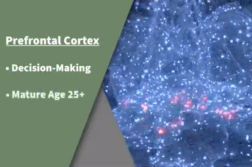SAN FRANCISCO, Calif. (Ivanhoe Newswire) —Around 500,000 children in the U.S. have epileptic seizures. The effects can be devastating, especially when medicine can’t help to stop seizures. In some cases, doctors ordered a craniotomy to find the source of the seizures… until robotic ROSA entered the picture.
For seven- year-old Molly Britt, nothing beats an ice cream sundae. Especially, when a cherry is on top.
These are the kind of moments mom and dad weren’t sure they would ever be able to have with Molly. She was born with tuberous sclerosis.
“It’s a rare genetic disorder where benign tubers can be found throughout the major organs of the body,” Molly’s mother, Bridget Britt, explained to Ivanhoe.
Gerald Grant, MD, Chief of Pediatric Neurosurgery at Stanford Children’s Health stated, “All they do is disrupt some of the normal networks of the brain.”
“I think at about two or three months old, we started noticing Molly making some strange movements,” recalled Molly’s father, Jeremy Britt.
“She started developing what we learned were seizures,” Bridget said.
Dr. Grant explained, “It becomes challenging to figure out which tuber is the one that is causing the seizures.”
Without opening up Molly’s skull or shaving her entire head, doctors made one-millimeter holes in her scalp. They used something called ROSA.
“ROSA is a robotic tool that allows us to precisely and more efficiently target deep areas of the brain,” Dr. Grant told Ivanhoe.
“We opened up the bone to get into the brain and place large electrodes on the surface of the brain to try to figure out where the seizures were coming from,” Dr. Grant elaborated.
Doctors were able to quickly pinpoint the source of the seizures for surgery later.
“Then they reopen and then go back and actually extract that portion of the brain tissue,” Jeremy clarified.
“Within a matter of weeks, we were seeing huge changes,” Jeremy continued.
“It has been … just miraculous,”Bridget shared.
It takes doctors approximately a week to gather the data they need from the electrodes. After that, the patient can return home. The method is used on both children and adult patients when medicine fails to stop their seizures. Other hospitals using ROSA include Children’s Hospital Colorado, Oregon Health and Science University, Seattle Children’s Hospital, and the University of Pittsburgh.
Contributors to this news report include: Cyndy McGrath, Executive Producer; Jennifer Winter, Field Producer; Rusty Reed, Videographer; Roque Correa, Editor.
To receive a free weekly e-mail on Medical Breakthroughs from Ivanhoe, sign up at: http://www.ivanhoe.com/ftk
MEDICAL BREAKTHROUGHS
RESEARCH SUMMARY
TOPIC: ROBOTIC ROSA ENABLES DOCTORS TO STOP SEIZURES!
REPORT: MB #4736
BACKGROUND: Epilepsy is a brain disorder featuring recurrent and unprovoked seizures. A person is diagnosed with epilepsy if they have two unprovoked seizures (or one unprovoked seizure with the likelihood of more) that were not caused by some known and reversible medical condition. Epileptic seizures may be related to a brain injury or a family tendency, but often the cause is completely unknown. There are 3.4 million people in the United States who have epilepsy. One in 26 people will develop epilepsy at some point in their life. There are between four and ten out of 1,000 people who live with active seizures. There are 150,000 new cases of epilepsy in the United States each year. A quarter of all newly diagnosed cases of epilepsy are in children and of more than three million Americans with epilepsy, 470,000 cases are children. Children account for 6.3 out of every 1,000 cases.
(Source: https://www.epilepsy.com/learn/about-epilepsy-basics, https://www.healthline.com/health/epilepsy/facts-statistics-infographic#7)
DIAGNOSING: To diagnose the cause of an epileptic seizure your doctor may give you a neurological exam, blood tests and an electroencephalogram (EEG) to detect any brain abnormalities. Other tests might include computerized tomography (CT Scan), magnetic resonance imaging (MRI), functional MRI (fMRI), positron emission tomography (PET) and a single-photon emission computerized tomography (SPECT).
(Source: https://www.mayoclinic.org/diseases-conditions/epilepsy/diagnosis-treatment/drc-20350098)
NEW TECHNOLOGY: ROSA ONE (Robotic Operating Surgical Assistant) is a surgical robot with an arm that gives children with uncontrolled epileptic seizures a minimally invasive option when conventional medicines don’t work. With 3D mapping and a laser, ROSA allows surgeons to target the exact source of the epileptic seizures in the brain and vaporize them precisely and quickly thanks to advanced image-guided surgical planning. The advantage of ROSA is that it is minimally invasive and can do the job with a lot of little holes as opposed to one big opening.
“We apply Rosa because of the ability to hit multiple targets and put in maybe 16 to 30 electrodes in the brain to uncover the place in the brain where the epilepsy is starting from. So, we can look at where the epilepsy begins and how the current and the electricity travels from one point to the next point at the beginning of the seizure. And that’s the excitement of uncovering that in three dimensions. You can look at some of the depth of these electrodes and how that will allow you to uncover that network and solve that mystery. Rosa doesn’t treat the seizures. It’s really targeting these electrodes so we can then figure out what we need to do to try to cure the seizures. For epilepsy surgery this has been a paradigm shift in the way we do invasive monitoring. The robot allows us to do epilepsy monitoring in the safest, most precise, high tech way available. More and more hospitals are adopting some robotic technique. It may be the ROSA or some other different robotic companies. But the idea of doing stereo EEG in three dimensions and having neurologists now think in 3D about seizures is I hope here to stay”, said Dr. Gerald Grant.
(Source: Gerald Grant, MD, Chief of Pediatric Neurosurgery, Stanford Children’s Health, https://news.vumc.org/2019/12/05/rosa%E2%80%88technology-helps-ease-patients-violent-seizures/), https://healthier.stanfordchildrens.org/en/rosa-epilepsy/)
FOR MORE INFORMATION ON THIS REPORT, PLEASE CONTACT:
MEDIA RELATIONS TEAM
(650) 498-7056
If this story or any other Ivanhoe story has impacted your life or prompted you or someone you know to seek or change treatments, please let us know by contacting Marjorie Bekaert Thomas at mthomas@ivanhoe.com




